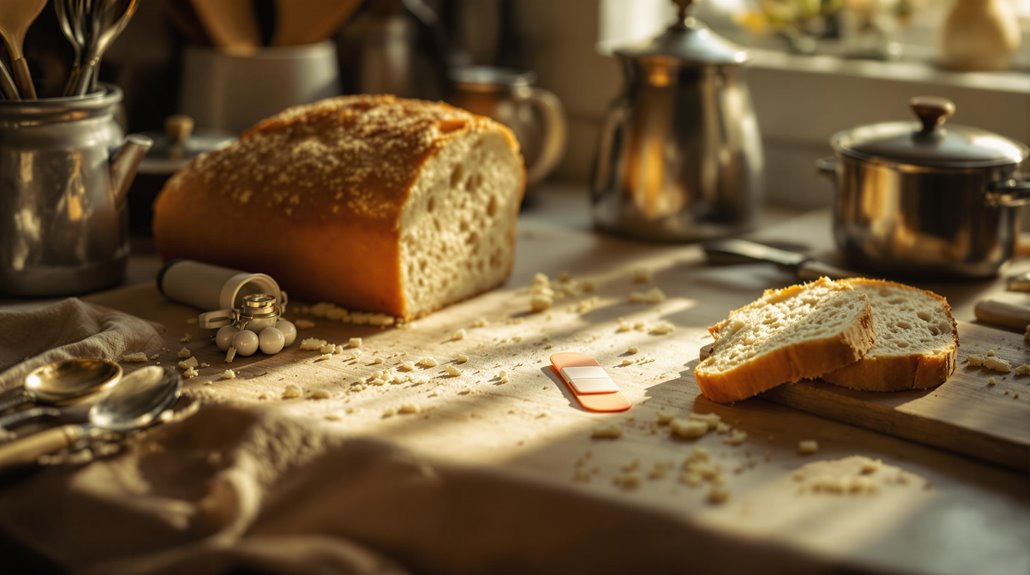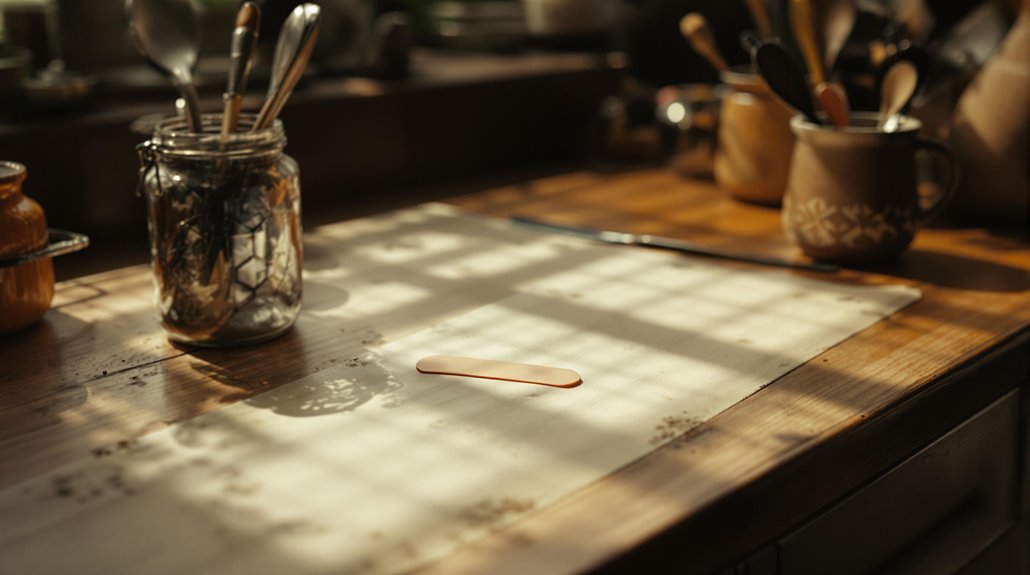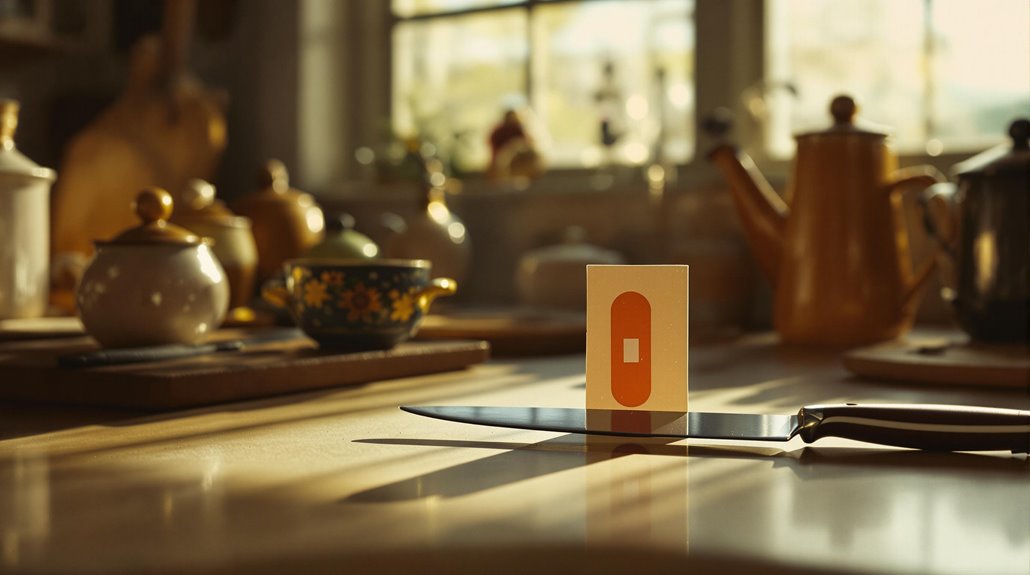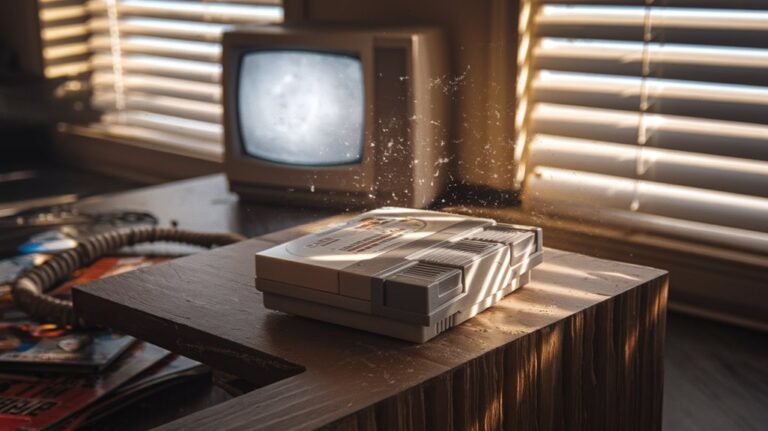Earle Dickson and the Kitchen Accident: One Slip, One Band-Aid, Millions Helped
You've probably applied a Band-Aid without giving much thought to its origins, but this simple adhesive bandage emerged from one man's concern for his accident-prone wife. When Earle Dickson noticed his wife Josephine's struggle with frequent kitchen cuts in 1920, he didn't just sympathize—he innovated. The story of how this cotton buyer turned a household problem into one of medicine's most recognized inventions offers an intriguing glimpse into how everyday challenges can spark revolutionary solutions.
The Man Behind the Band-Aid

One brilliant invention came from a cotton buyer with no formal training as an inventor. Earle Dickson, born in 1892 in Grandview, Tennessee, would transform home first aid while working at Johnson & Johnson. His invention inspiration struck in 1920, leading to one of the most recognized medical products worldwide.
Looking at Dickson's personal background, you'll find a simple life that took an extraordinary turn. After marrying Josephine Frances Knight in 1917, he settled in Highland Park, New Jersey, where he worked as a cotton buyer for Johnson & Johnson. His creative solution used sterile gauze and tape to create a more practical bandage for minor injuries. His wife's frequent kitchen accidents and cuts inspired him to develop a better bandaging solution.
His career trajectory changed dramatically after creating the Band-Aid, earning him promotions to vice president and a seat on the company's board of directors.
Though he retired in 1957, his legacy lives on through the billions of bandages manufactured since his groundbreaking invention.
A Wife's Kitchen Struggles
The daily kitchen accidents of Earle Dickson's wife, Josephine, sparked the inspiration for his revolutionary invention.
Like many homemakers in 1920s New Brunswick, she faced constant kitchen mishaps – cuts, burns, and bruises while preparing meals. Without effective bandaging options, these minor injuries posed serious risks in the pre-antibiotic era.
Josephine's struggle reflected a larger problem. The available solutions were impractical: bulky fabric strips that wouldn't stay in place and makeshift bandages that were nearly impossible to apply single-handedly. As an employee at Johnson & Johnson, Earle was uniquely positioned to develop a solution.
This homemaker stress was amplified by the constant depletion of dishrags and the challenge of maintaining hygiene while cooking. Her situation highlighted a critical gap between hospital and home medical care, revealing the urgent need for a practical, easy-to-apply wound covering for everyday use. Using her experience, Earle combined antiseptic cotton gauze with surgical tape to create a solution.
From Problem to Prototype
Drawing from his experience as a cotton buyer at Johnson & Johnson, Earle Dickson crafted a solution to his wife's daily cuts and burns. His problem identification began with observing how traditional bandages were too cumbersome for self-application, especially for someone working alone in the kitchen.
Through prototype iteration, Dickson combined materials he knew well from his workplace: surgical tape and gauze. He created a simple yet innovative design by placing a strip of gauze down the center of a long piece of adhesive tape, then covering it with crinoline fabric. The initial handmade versions saw limited success with consumers.
The resulting prototype measured 2.5 inches wide and 18 inches long, which you could easily cut to size. Josephine could now quickly dress her wounds single-handedly, proving the design's effectiveness in real-world testing. The prototype led to first commercial production in 1921, though initial sales were modest at $3,000 for the year.
Making the First Band-Aid
After finalizing his prototype design, Dickson began crafting the first Band-Aids through a methodical assembly process. His innovative approach to wound care started with laying out surgical tape as the adhesive base, measuring 2.5 inches wide by 18 inches long.
You'll notice he placed cotton gauze in a precise 1-inch strip down the middle, creating the perfect cushion for injuries. His experience as a cotton buyer at Johnson & Johnson helped him select the ideal materials for the task.
To perfect his adhesive technology, Dickson covered the bandage with crinoline fabric, preventing the strips from sticking together when rolled. You could then cut any length needed from these convenient rolls.
While his initial versions were handmade, Johnson & Johnson soon produced test batches and developed machinery for mass production in 1924. Since then, over 100 billion Band-Aids have been manufactured by Johnson & Johnson. The company later introduced precut, individually wrapped versions in more practical sizes for everyday use.
Early Marketing Challenges

Despite its innovative design, Band-Aid faced significant marketing hurdles when Johnson & Johnson launched it in 1921. With only $3,000 in first-year sales, the company had to overcome serious market misconceptions about adhesive bandages, as consumers weren't familiar with this new healthcare solution. The company brought on W. Johnson Kenyon to name the product.
The initial handmade Band-Aids came in small tin containers before mass production began in the 1930s. To address these challenges, Johnson & Johnson launched an aggressive consumer education campaign. They distributed free samples to Boy Scouts, provided demonstrations of proper application, and highlighted the product's sterile nature.
The company also introduced convenient tin containers and partnered with medical professionals for endorsements. During World War II, they expanded their reach by supplying bandages to soldiers, which helped establish Band-Aid as a household name.
Through targeted advertising in women's magazines and sponsorship of first-aid programs, they transformed an initially struggling product into a medicine cabinet essential.
The Band-Aid Revolution
When Earle Dickson crafted the first Band-Aid in 1921, he couldn't have imagined how his invention would revolutionize home healthcare. His simple combination of adhesive tape and gauze transformed first aid, making wound care accessible to everyone.
You'll find it hard to believe that before Band-Aids, treating minor cuts was a complex process requiring separate materials and assistance.
This bandage innovation evolved quickly from its original 18-inch design to more practical sizes through machine production. By 1939, you could count on completely sterile bandages, and by 1958, sheer vinyl options gave you more choices.
The impact was so significant that Band-Aid became a household name, finding its way into millions of medicine cabinets and first-aid kits worldwide. Even the military recognized its value, distributing Band-Aids to soldiers during World War II.










